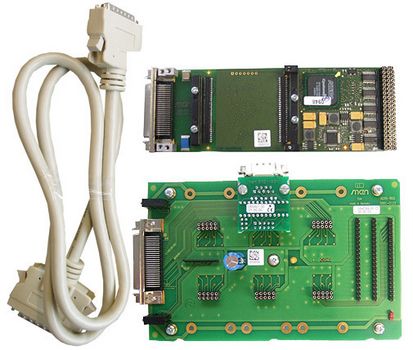Features
- 1 Main M-Module M199 for USM Universal Submodules:
- 1 FPGA 33,216 LE
- 32 MB DDR2 SDRAM, 8 MB Flash
- 1 bare USM module US0
- 1 evaluation board with RS232 debug interface
- 1 FPGA development package:
- Main bus interface
- Memory control
- Nios softcore
- Wishbone/Avalon bridges
- For user-defined I/O
- 1 SCSI cable
- -40 to +85 °C with qualified components

